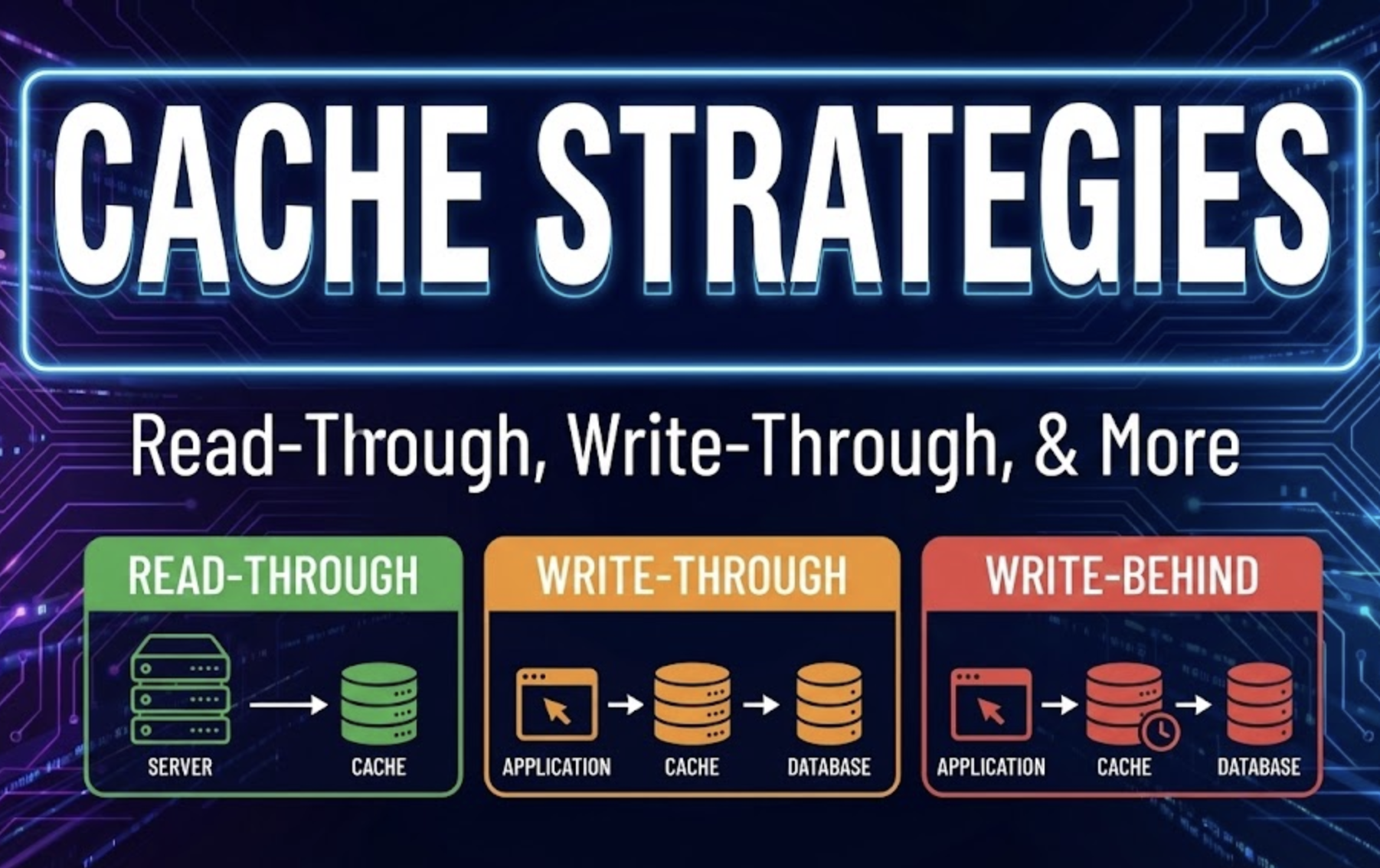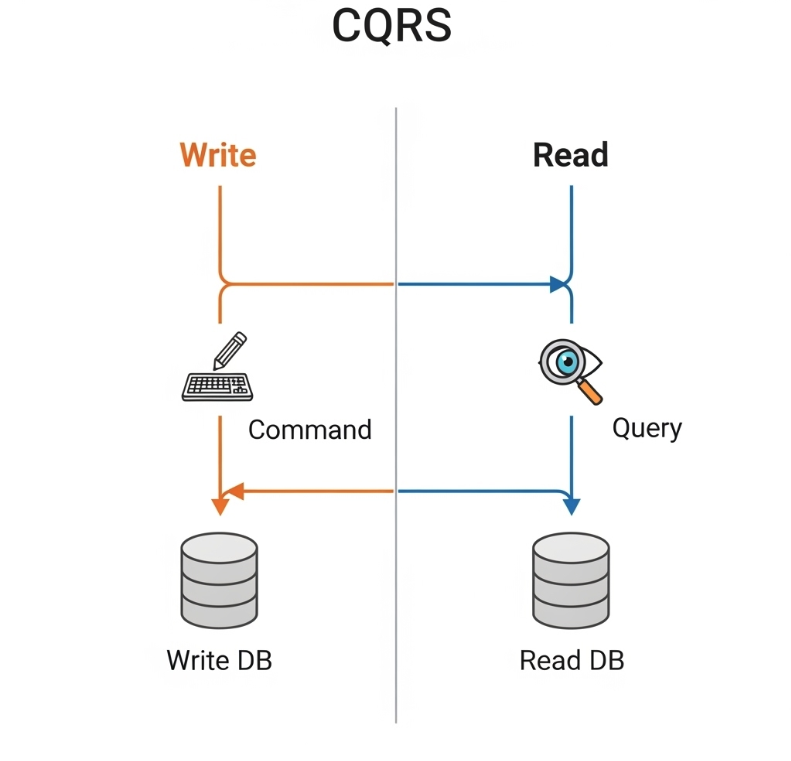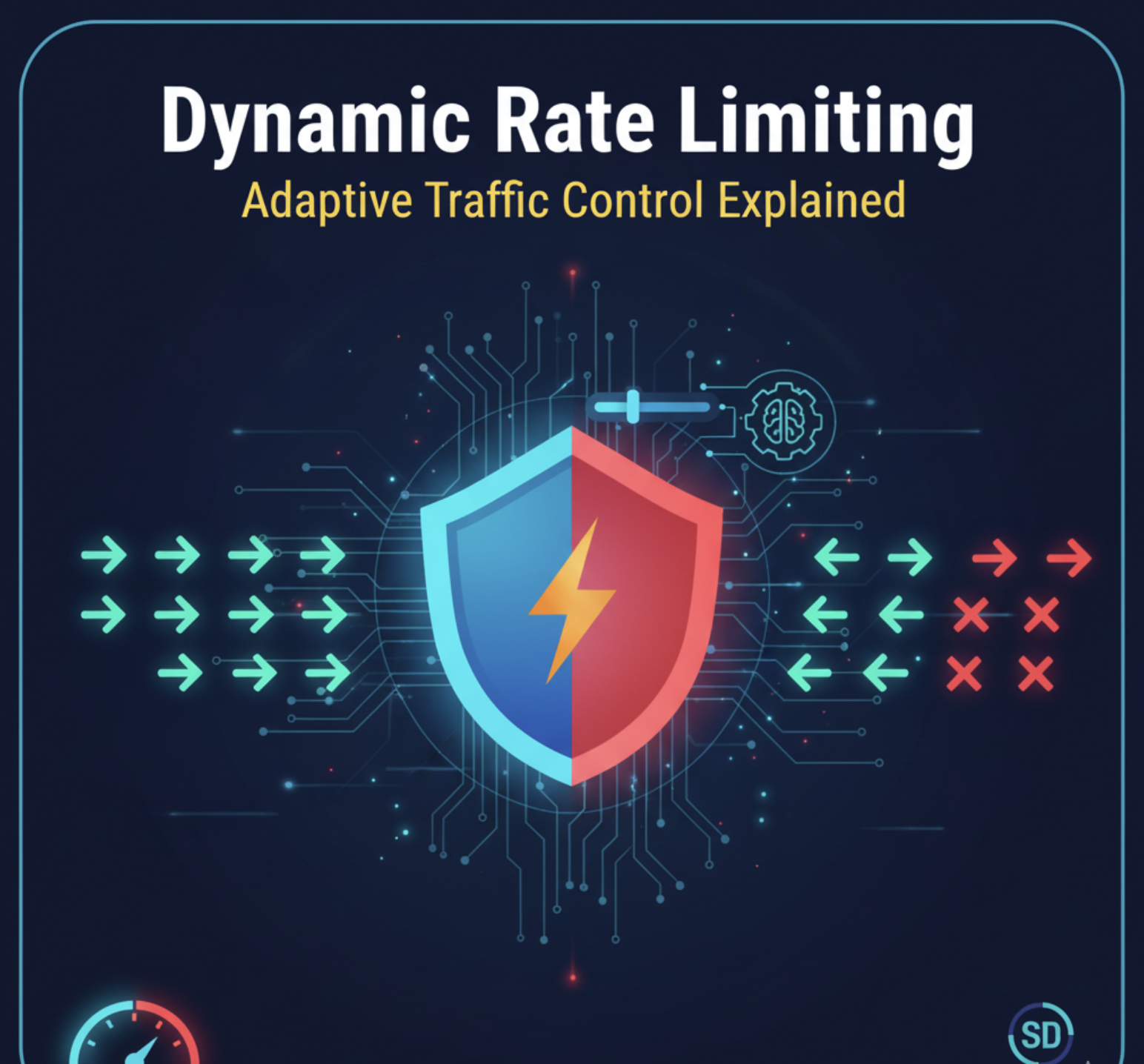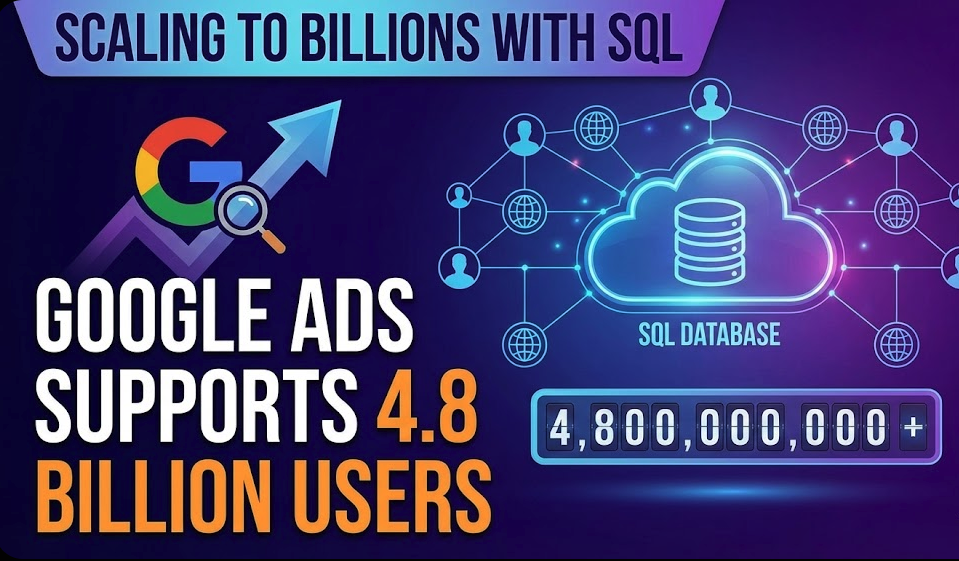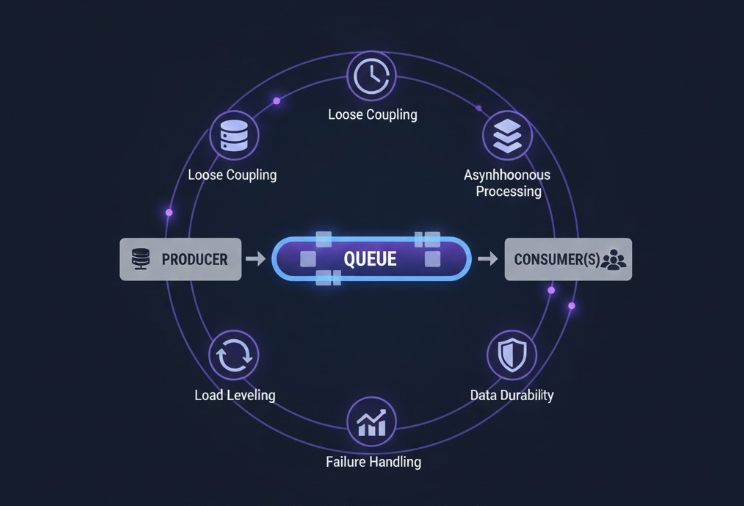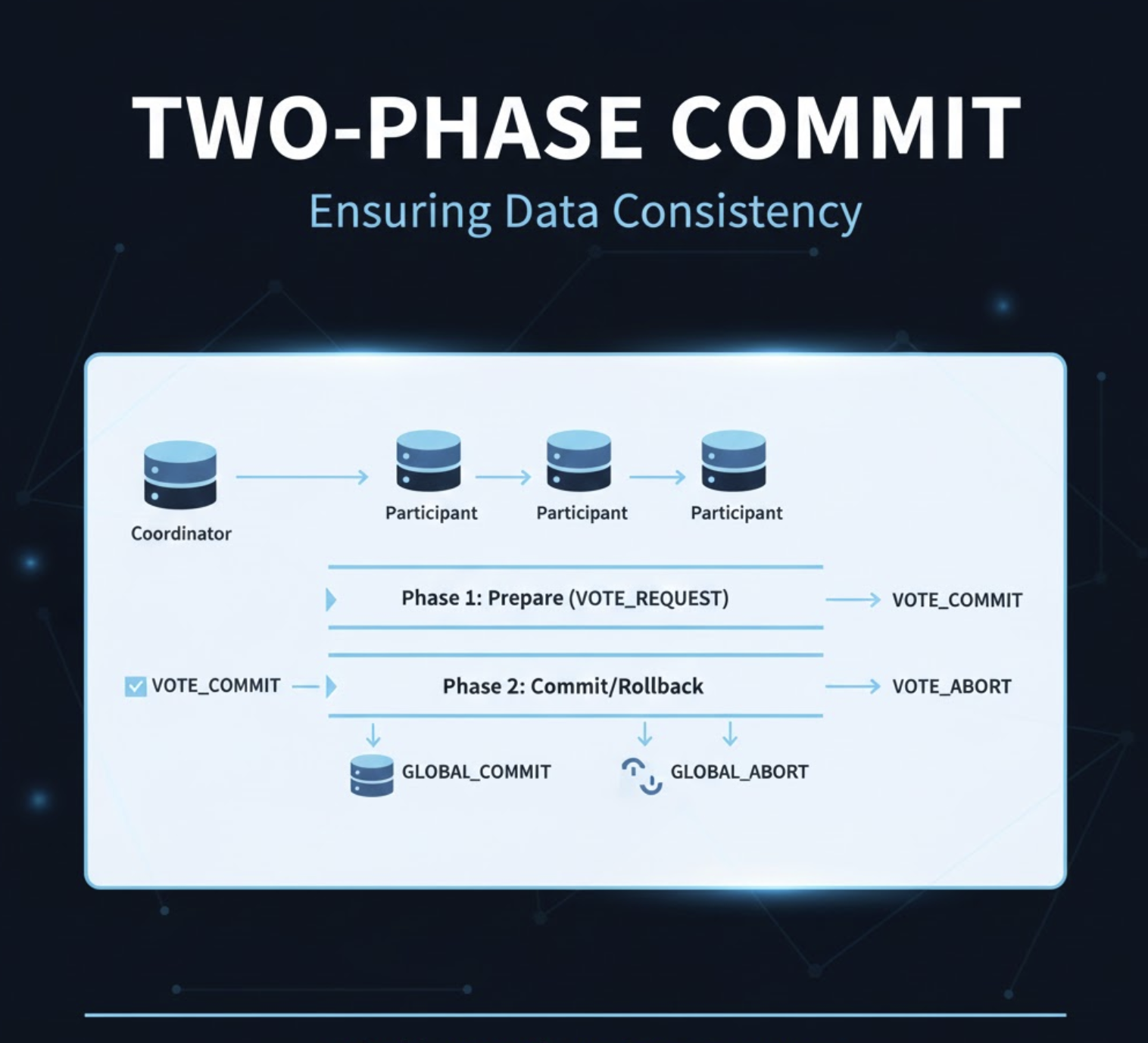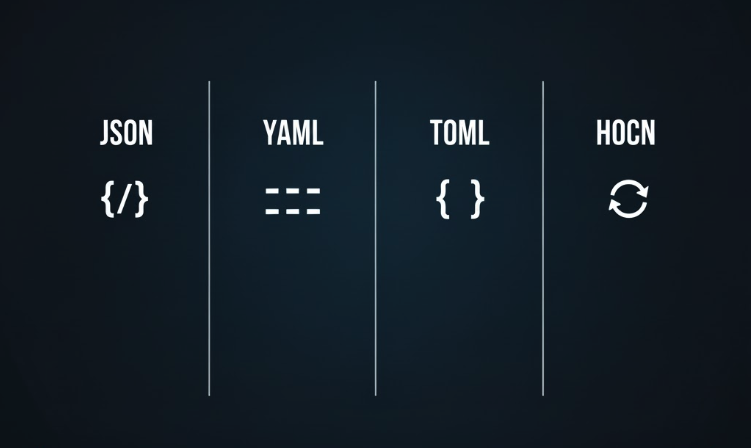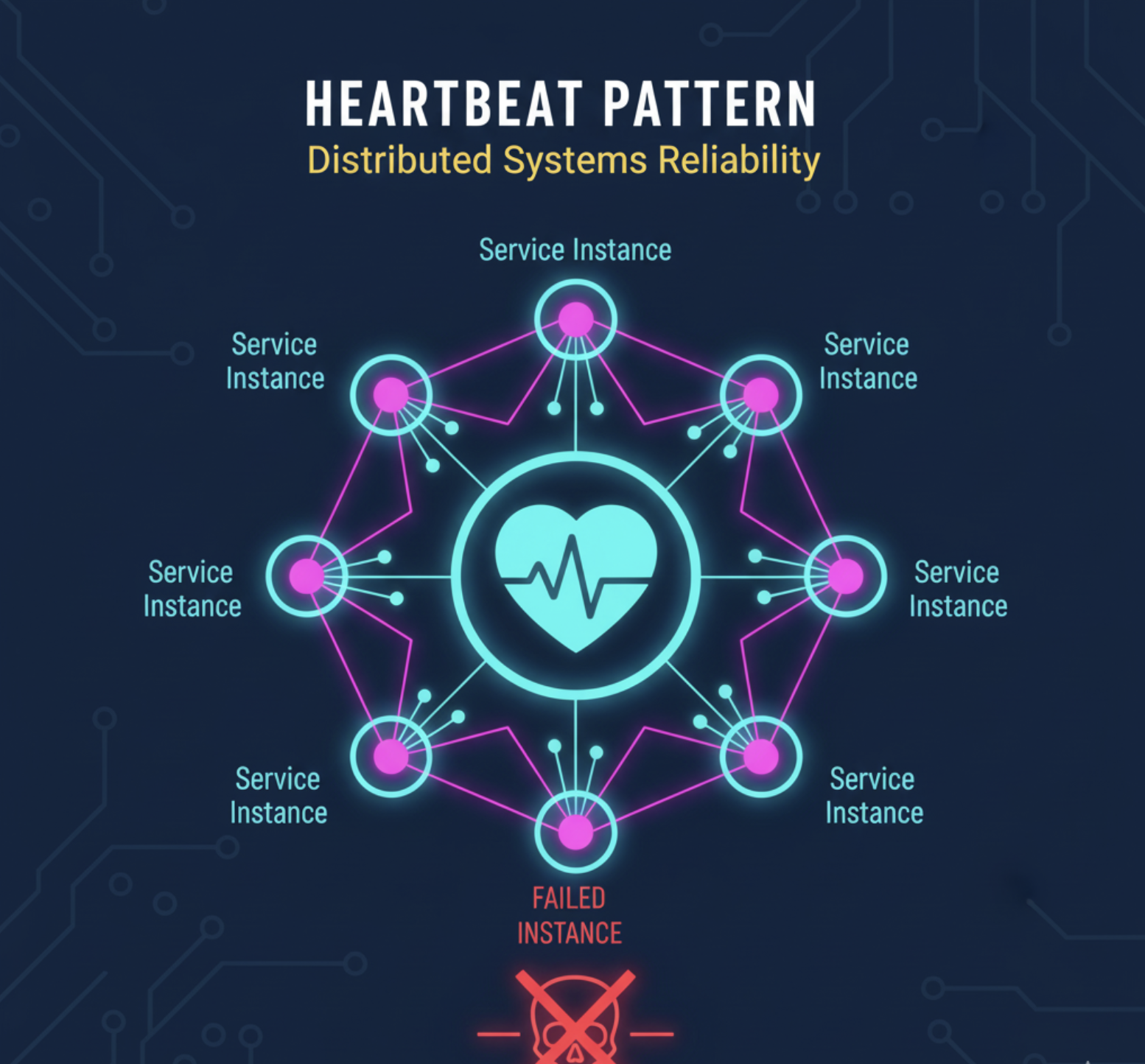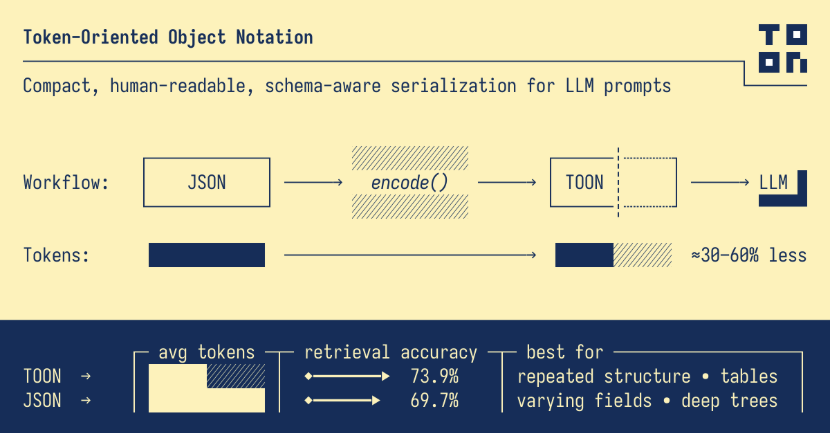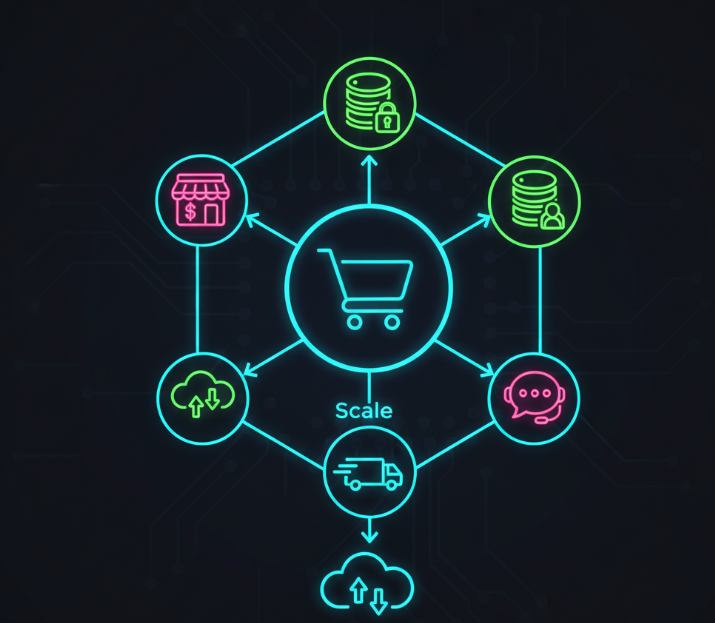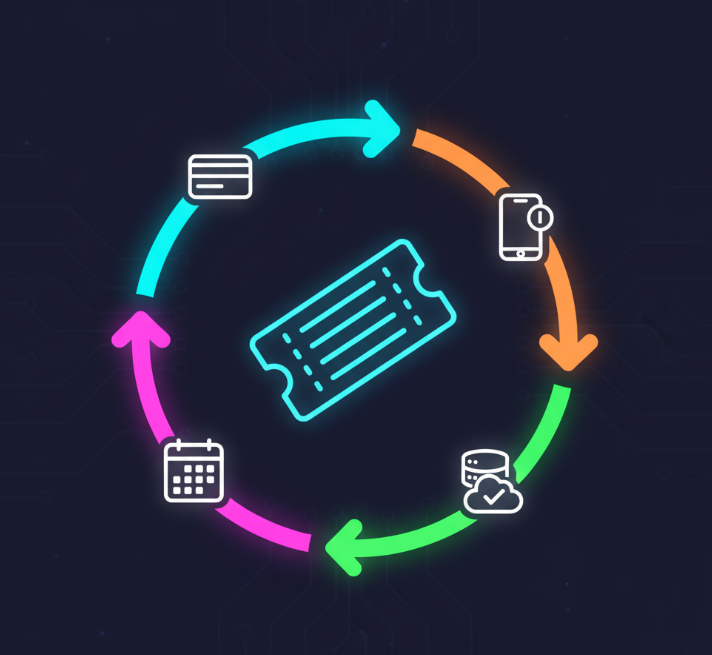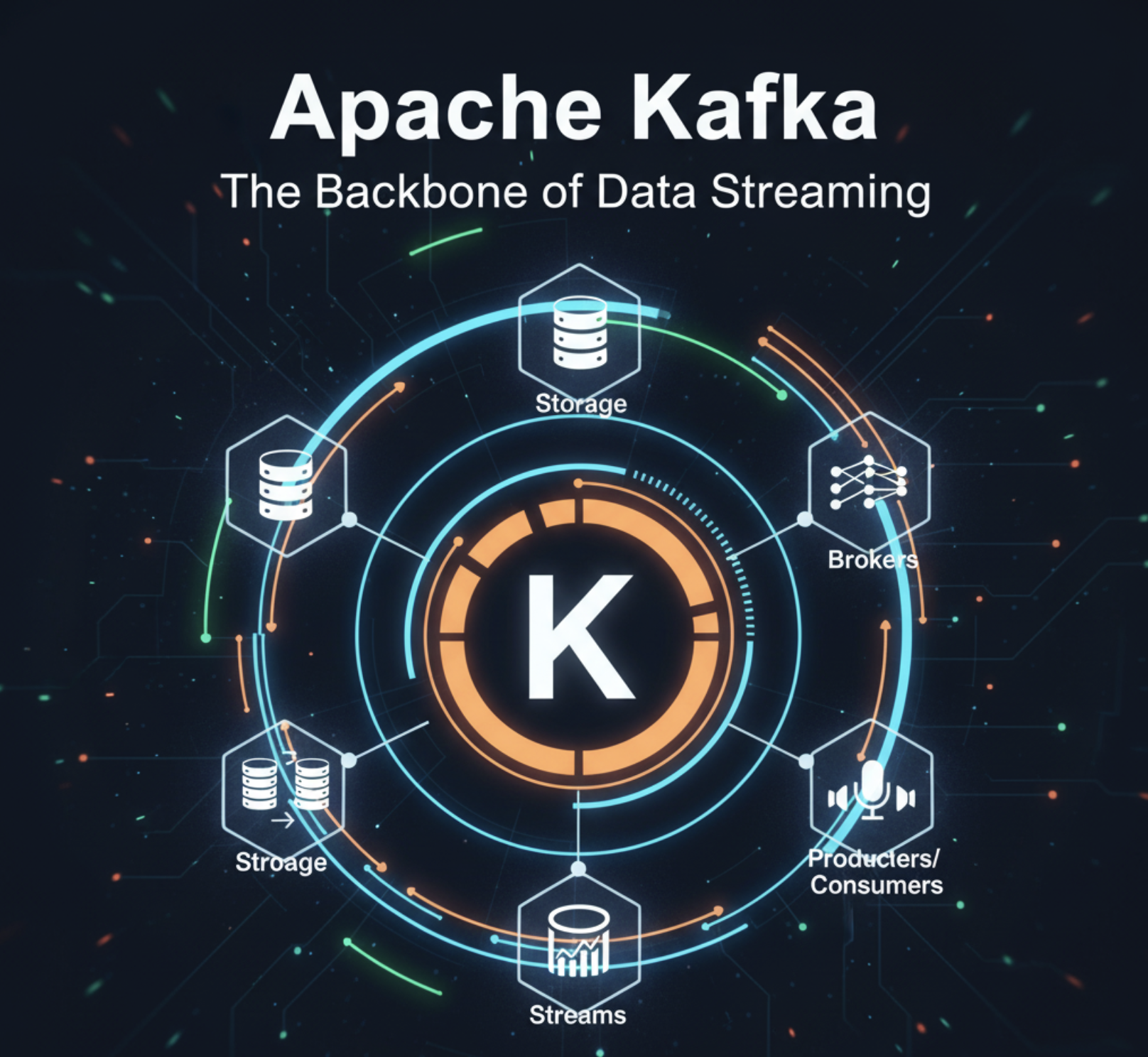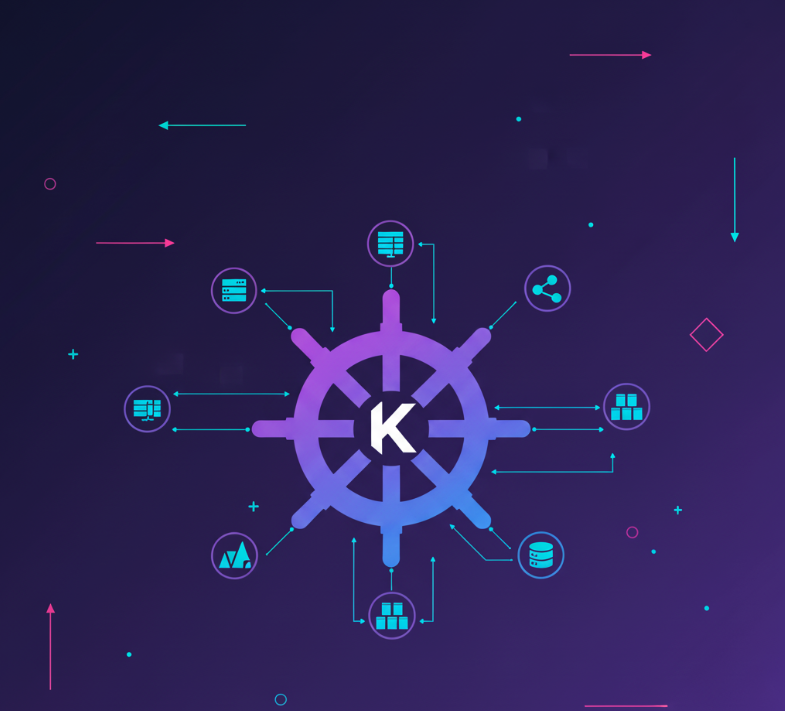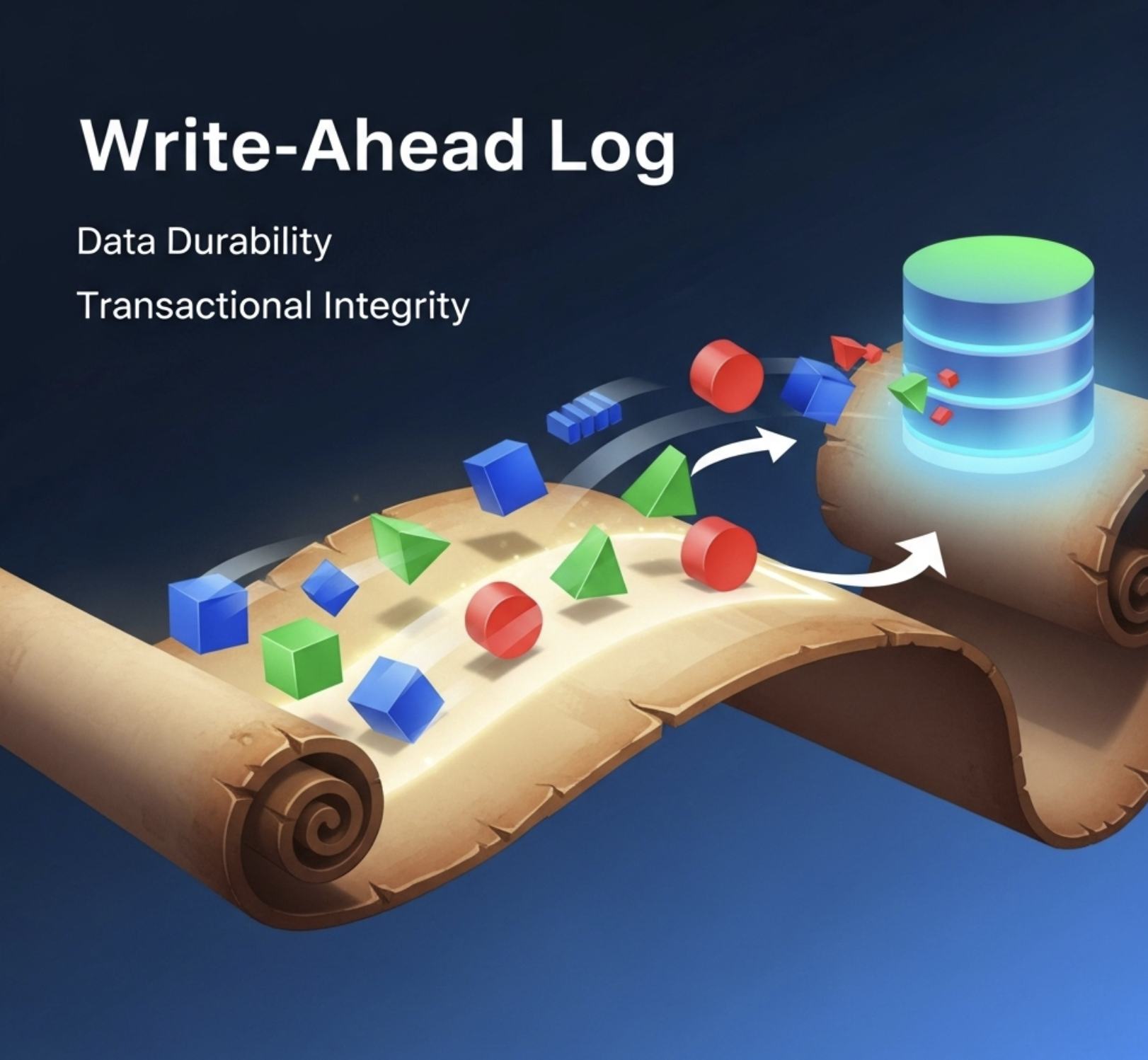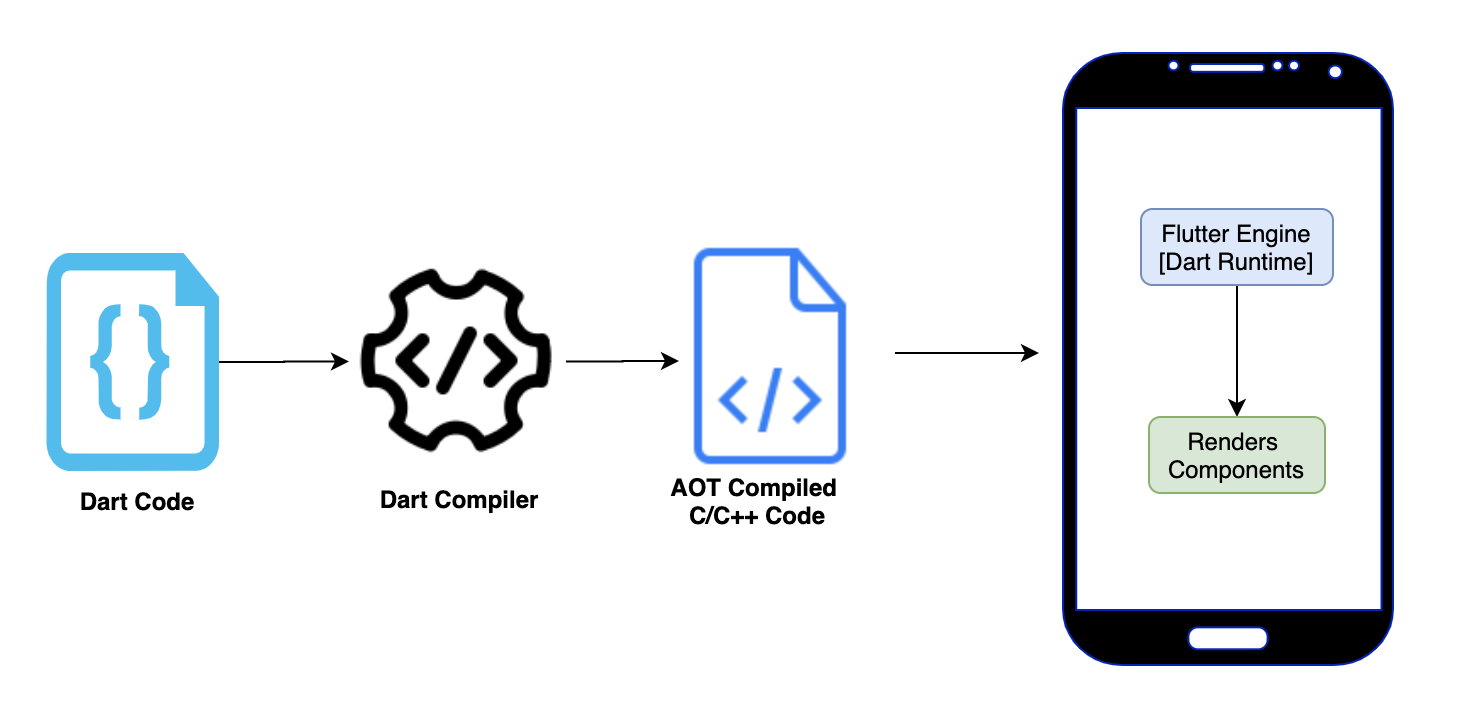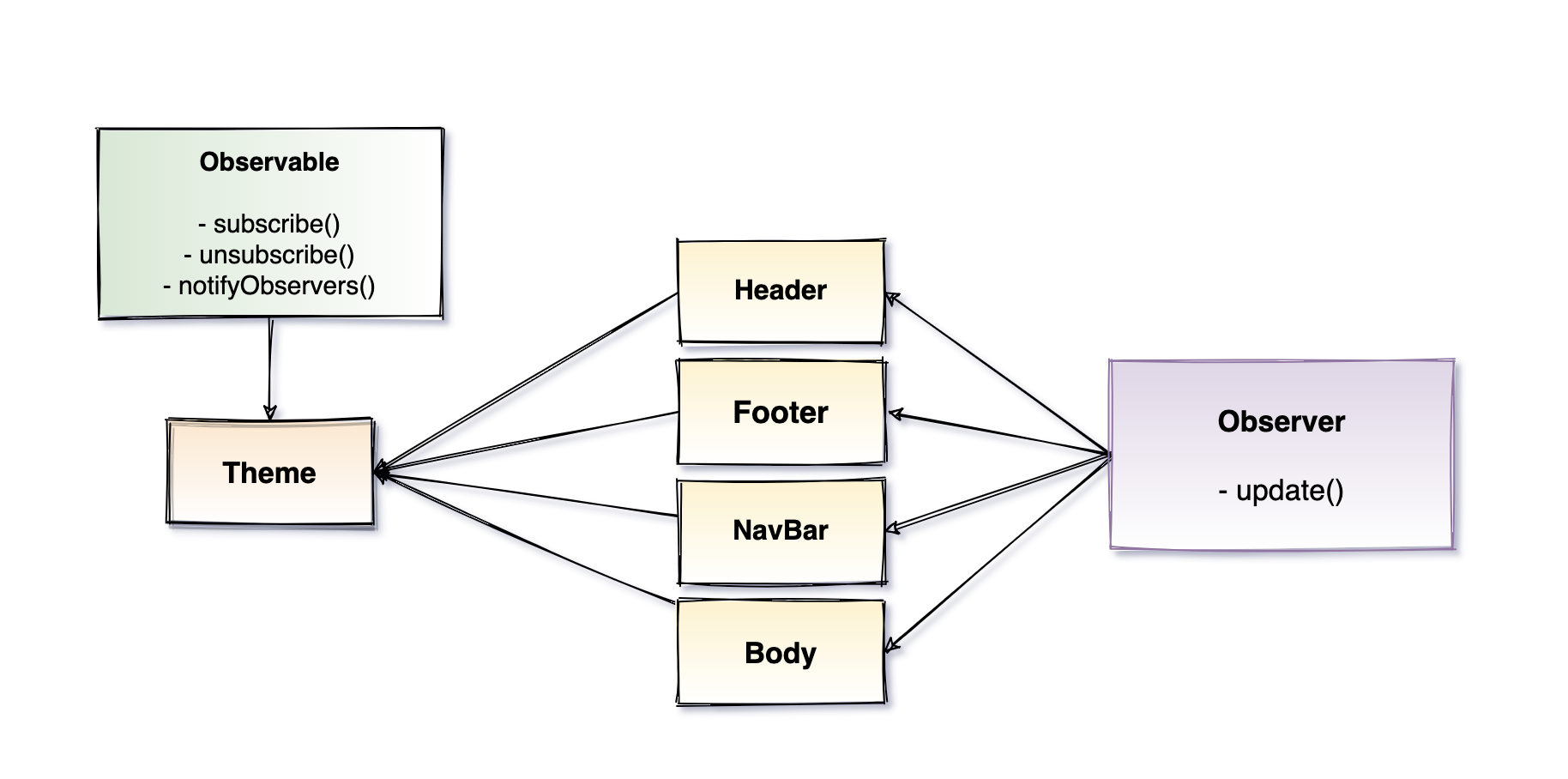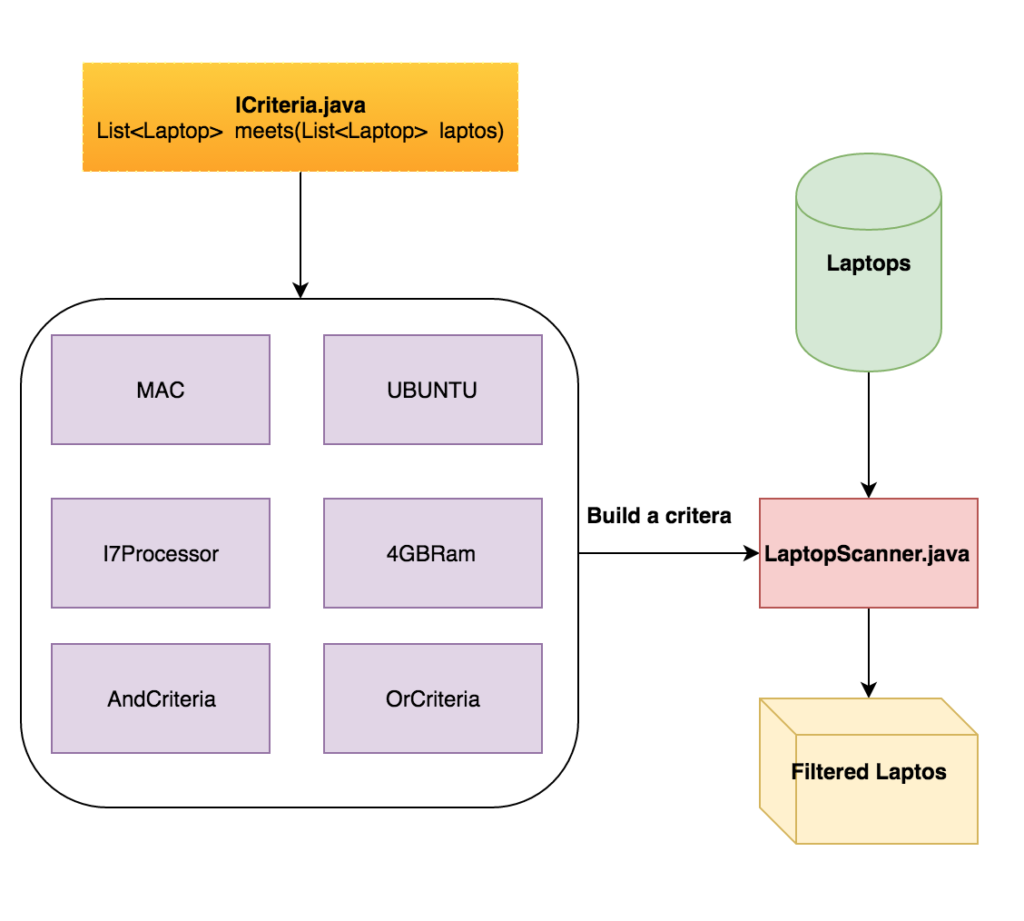You launch a small t-shirt store on Shopify at 9 AM. By noon, you’ve made 50 sales. By evening, your store has processed 500 orders without you touching a single server. Tomorrow, your traffic spikes 10x because someone tweeted about your product. The store doesn’t even hiccup.
That’s Shopify. But here’s the wild part: they’re simultaneously handling this for 5+ million other stores, processing billions of dollars in sales, and during Black Friday, they peak at over 70,000 orders per minute.
How does a system handle that kind of load without falling apart? Let me show you the engineering behind one of the most successful e-commerce platforms ever built.
The Problem That Shaped Everything
Back in 2004, Tobias Lütke wanted to sell snowboards online. He tried every e-commerce platform available and hated them all. So he did what any frustrated developer would do: he built his own.
He chose Ruby on Rails, then a brand new framework. Built a simple store. Sold some snowboards. And then something unexpected happened.
Other people wanted to use his platform. A few stores became dozens. Dozens became hundreds. By 2009, they had thousands of stores, and the single Rails monolith was starting to crack under pressure.
Here’s what was breaking:
- Slow deployments: Every feature change required deploying the entire codebase
- Database bottlenecks: A single MySQL database couldn’t handle the growth
- Blast radius: One bug could take down every single store on the platform
- Team coordination: Developers were constantly stepping on each other’s code
They needed to evolve, fast. But Shopify made a decision that surprised everyone: they didn’t go full microservices.
The Brilliant Compromise: Modular Monolith
When most companies hit scaling problems, they break everything into microservices. Shopify took a different path: the modular monolith.
Think of it like an apartment building vs. a neighborhood of houses:
- Microservices: Separate houses scattered around (high isolation, high complexity)
- Traditional Monolith: One giant mansion where everyone shares everything (simple but chaotic)
- Modular Monolith: Apartment building with separate units (balanced isolation, shared infrastructure)
graph TB
subgraph "Shopify Modular Monolith"
subgraph "Orders Module"
O1[fa:fa-shopping-cart Order API]
O2[fa:fa-cogs Order Business Logic]
O3[fa:fa-database Order Database Access]
end
subgraph "Products Module"
P1[fa:fa-box Product API]
P2[fa:fa-cogs Product Business Logic]
P3[fa:fa-database Product Database Access]
end
subgraph "Billing Module"
B1[fa:fa-credit-card Billing API]
B2[fa:fa-cogs Billing Business Logic]
B3[fa:fa-database Billing Database Access]
end
subgraph "Inventory Module"
I1[fa:fa-warehouse Inventory API]
I2[fa:fa-cogs Inventory Business Logic]
I3[fa:fa-database Inventory Database Access]
end
subgraph "Shared Infrastructure"
DB[fa:fa-database Database Cluster]
Cache[fa:fa-memory Redis Cache]
Queue[fa:fa-tasks Job Queue]
end
end
O3 --> DB
P3 --> DB
B3 --> DB
I3 --> DB
O2 --> Cache
P2 --> Cache
B2 --> Cache
O2 --> Queue
P2 --> Queue
style DB fill:#e3f2fd
style Cache fill:#fff3e0
style Queue fill:#f3e5f5
Here’s what made this brilliant:
1. Clear Boundaries: Each module (Orders, Products, Billing, Inventory) has its own clear API. Other modules can’t reach into its internals.
2. Single Deployment: Despite the modularity, it’s still one Rails app. Deploy once, everything updates together.
3. Shared Infrastructure: All modules share the same database cluster, cache, and job queue. No distributed transaction nightmares.
4. Easy Refactoring: Want to extract Orders into a separate service later? The boundaries are already defined.
They used Rails Engines to enforce these boundaries. Each module is essentially a mini-Rails app inside the main app. The tool they built called “Packwerk” ensures no module sneaks into another module’s private code.
Real-world impact: Development velocity improved by 40% because teams could work independently without constant merge conflicts.
The Pod Architecture: Scaling the Unscalable
But even a modular monolith hits limits. By 2014, Shopify had hundreds of thousands of stores. Black Friday was becoming a nightmare. Their single database cluster couldn’t handle the write load.
The insight that saved them: most stores never interact with each other.
A t-shirt store in Australia has zero reason to share database rows with a bookstore in Germany. So why keep them in the same database?
Enter: Pods.
flowchart LR
Router[fa:fa-globe Global Router]
subgraph POD1[fa:fa-server POD 1: North America]
direction TB
App1[fa:fa-desktop Shopify App]
DB1[fa:fa-database MySQL Shard]
Cache1[fa:fa-memory Redis Cache]
Queue1[fa:fa-tasks Job Queue]
App1 --> DB1
App1 --> Cache1
App1 --> Queue1
end
subgraph POD2[fa:fa-server POD 2: Europe]
direction TB
App2[fa:fa-desktop Shopify App]
DB2[fa:fa-database MySQL Shard]
Cache2[fa:fa-memory Redis Cache]
Queue2[fa:fa-tasks Job Queue]
App2 --> DB2
App2 --> Cache2
App2 --> Queue2
end
subgraph POD3[fa:fa-server POD 3: Asia Pacific]
direction TB
App3[fa:fa-desktop Shopify App]
DB3[fa:fa-database MySQL Shard]
Cache3[fa:fa-memory Redis Cache]
Queue3[fa:fa-tasks Job Queue]
App3 --> DB3
App3 --> Cache3
App3 --> Queue3
end
Router ==> POD1
Router ==> POD2
Router ==> POD3
style POD1 fill:#e8f5e9,stroke:#4caf50,stroke-width:3px
style POD2 fill:#e3f2fd,stroke:#2196f3,stroke-width:3px
style POD3 fill:#fff3e0,stroke:#ff9800,stroke-width:3px
style Router fill:#f3e5f5,stroke:#9c27b0,stroke-width:3px
A pod is a completely isolated copy of Shopify:
- Full application stack
- Dedicated database shard
- Own cache layer
- Separate job queue
- Independent search index
When you sign up for Shopify, you get assigned to a pod. Your store lives there forever (mostly). All your data, all your traffic, contained in that pod.
The magic: If Pod 1 goes down, Pods 2 and 3 keep running. If Pod 2 gets overloaded during a flash sale, it doesn’t affect Pod 1.
The challenge: What about merchant data that spans pods? Like Shopify’s own analytics dashboard showing all stores?
Their solution: Cross-pod queries are read-only and eventually consistent. The analytics service maintains its own denormalized copy of data from all pods. It might be a few seconds stale, but that’s acceptable for dashboards.
The Black Friday Challenge
Let’s talk numbers. Black Friday Cyber Monday (BFCM) is Shopify’s Super Bowl.
BFCM 2023 stats:
- 61 million shoppers
- $9.3 billion in sales over the weekend
- Peak: 75,000+ orders per minute
- 400+ million product searches
- 99.99% uptime maintained
That’s over 1,200 orders per second at peak. Each order involves:
- Payment processing
- Inventory checks
- Email notifications
- Webhook calls to apps
- Analytics updates
- Search index updates
How do they not collapse?
Strategy 1: Predictive Scaling
Shopify doesn’t wait for traffic to arrive. Weeks before BFCM, they:
- Analyze previous year’s patterns
- Identify which pods will get hit hardest
- Pre-provision 3x normal capacity
- Run stress tests at 150% expected load
They even do “game day” drills where engineers practice incident response scenarios.
Strategy 2: Feature Flags
During BFCM, non-critical features get turned off:
graph LR
subgraph "Normal Mode"
F1[fa:fa-chart-bar Full Analytics]
F2[fa:fa-file-alt Detailed Logs]
F3[fa:fa-magic Complex Recommendations]
F4[fa:fa-clock Real-time Reports]
end
subgraph "BFCM Mode"
F5[fa:fa-bolt Critical Path Only]
F6[fa:fa-file Sampled Logs]
F7[fa:fa-save Cached Recommendations]
F8[fa:fa-hourglass-half Delayed Reports]
end
F1 -.->|Disable| F5
F2 -.->|Reduce| F6
F3 -.->|Simplify| F7
F4 -.->|Defer| F8
style F1 fill:#e3f2fd
style F2 fill:#e3f2fd
style F3 fill:#e3f2fd
style F4 fill:#e3f2fd
style F5 fill:#c8e6c9
style F6 fill:#c8e6c9
style F7 fill:#c8e6c9
style F8 fill:#c8e6c9
Using LaunchDarkly, they can toggle features in milliseconds. If a pod starts struggling, they automatically disable expensive background jobs.
Strategy 3: Write-Heavy Optimization
Most e-commerce platforms are read-heavy. But during checkout, Shopify becomes write-heavy (orders, payments, inventory updates).
Their solution: Batch writes and async processing.
sequenceDiagram
participant C as Customer
participant A as Shopify App
participant D as Database
participant Q as Job Queue
Note over C,D: Synchronous: Fast Path
C->>A: Place Order
A->>D: Write Order
A->>C: Confirmed ✓
Note over A,Q: Asynchronous: Slow Path
A->>Q: Queue: Email, Webhooks, Analytics
Note over Q: Background jobs process later
Orders continue even if delayed
The order gets written immediately (that’s critical). Everything else happens asynchronously. If email servers are slow during peak traffic, orders still go through.
The Database Strategy: MySQL at Billion-Dollar Scale
Shopify runs on MySQL. Not MongoDB, not Cassandra, not some trendy NoSQL database. Plain old MySQL.
Why? Team expertise and proven reliability.
But making MySQL work at this scale required serious engineering.
Vitess: The Database Multiplier
Shopify uses Vitess, a database clustering system built by YouTube (also massive MySQL users). Vitess sits between the application and MySQL, providing:
graph TB
subgraph "Application Layer"
App[fa:fa-desktop Shopify Application]
end
subgraph "Vitess Layer"
VTGate1[fa:fa-door-open VTGate 1
Query Router]
VTGate2[fa:fa-door-open VTGate 2
Query Router]
VTTablet1[fa:fa-tablet VTTablet 1]
VTTablet2[fa:fa-tablet VTTablet 2]
end
subgraph "MySQL Layer"
Primary1[fa:fa-database MySQL Primary 1]
Replica1A[fa:fa-copy Replica 1A]
Replica1B[fa:fa-copy Replica 1B]
Primary2[fa:fa-database MySQL Primary 2]
Replica2A[fa:fa-copy Replica 2A]
Replica2B[fa:fa-copy Replica 2B]
end
App --> VTGate1
App --> VTGate2
VTGate1 --> VTTablet1
VTGate1 --> VTTablet2
VTGate2 --> VTTablet1
VTGate2 --> VTTablet2
VTTablet1 --> Primary1
VTTablet1 --> Replica1A
VTTablet1 --> Replica1B
VTTablet2 --> Primary2
VTTablet2 --> Replica2A
VTTablet2 --> Replica2B
style Primary1 fill:#4caf50,color:#fff
style Primary2 fill:#4caf50,color:#fff
style Replica1A fill:#e3f2fd
style Replica1B fill:#e3f2fd
style Replica2A fill:#e3f2fd
style Replica2B fill:#e3f2fd
VTGate: Query router that knows which shard has what data
VTTablet: Sits in front of each MySQL instance, handles connection pooling and query rewriting
Key optimizations:
- Read/Write Splitting: Reads go to replicas, writes to primary
- Query Rewriting: Vitess rewrites queries to be shard-aware
- Connection Pooling: Thousands of app connections become dozens to MySQL
- Automatic Failover: If a primary dies, Vitess promotes a replica in seconds
The Sharding Strategy
Shopify shards by store ID. Simple but effective:
1
shard_id = store_id % number_of_shards
Why this works:
- Store data is naturally isolated
- No cross-shard joins needed
- Easy to add more shards (just split existing ones)
- Queries are predictable
What doesn’t work:
- Queries across all stores (solved with read replicas and data warehouses)
- Stores that outgrow their shard (solved by moving large stores to dedicated shards)
The API Strategy: GraphQL Was the Right Bet
Shopify made a bold move in 2016: they built their entire Admin API in GraphQL, when GraphQL was still experimental.
The problem with their old REST API:
1
2
3
4
5
GET /admin/orders/123
GET /admin/orders/123/customer
GET /admin/orders/123/line_items
GET /admin/products/456
GET /admin/products/456/variants
That’s 5 requests to build one admin page. On mobile with spotty connections, that’s painful.
With GraphQL:
1
2
3
4
5
6
7
8
9
10
11
12
13
14
15
16
17
18
19
query {
order(id: "123") {
id
customer {
name
email
}
lineItems {
title
quantity
product {
title
variants {
price
}
}
}
}
}
One request. Exactly the data you need. Nothing more, nothing less.
graph TB
subgraph "Client Apps"
Mobile[fa:fa-mobile-alt Mobile App]
Web[fa:fa-laptop Web App]
POS[fa:fa-cash-register POS System]
end
subgraph "GraphQL Layer"
Gateway[fa:fa-door-open GraphQL Gateway]
Schema[fa:fa-project-diagram Unified Schema]
end
subgraph "Backend Services"
Orders[fa:fa-shopping-cart Orders Service]
Products[fa:fa-box Products Service]
Customers[fa:fa-users Customers Service]
Inventory[fa:fa-warehouse Inventory Service]
end
subgraph "Data Layer"
DB[fa:fa-database Database]
Cache[fa:fa-memory Redis Cache]
end
Mobile --> Gateway
Web --> Gateway
POS --> Gateway
Gateway --> Schema
Schema --> Orders
Schema --> Products
Schema --> Customers
Schema --> Inventory
Orders --> DB
Products --> DB
Customers --> DB
Inventory --> DB
Orders --> Cache
Products --> Cache
style Gateway fill:#f3e5f5
style Schema fill:#e1bee7
style DB fill:#e3f2fd
style Cache fill:#fff3e0
Key optimizations:
- DataLoader: Batches and caches database queries to prevent N+1 problems
- Query Complexity Analysis: Rejects overly complex queries before execution
- Persisted Queries: Frequently used queries are pre-compiled and cached
- Field-Level Caching: Individual GraphQL fields can have different cache policies
The Frontend Evolution: From jQuery to React
Shopify’s admin started as a traditional Rails app with jQuery. By 2017, that wasn’t cutting it anymore. The admin was becoming a full-featured business management tool.
They rebuilt it as a React app using Polaris, their design system:
graph TB
subgraph "Modern Shopify Admin"
React[fa:fa-react React Application]
Polaris[fa:fa-palette Polaris Design System]
Apollo[fa:fa-rocket Apollo Client]
end
subgraph "Communication Layer"
GraphQL[fa:fa-project-diagram GraphQL API]
end
subgraph "Backend"
Server[fa:fa-gem Rails Backend]
end
React --> Polaris
React --> Apollo
Apollo --> GraphQL
GraphQL --> Server
style React fill:#61dafb,color:#000
style Polaris fill:#95bf47,color:#fff
style Apollo fill:#311c87,color:#fff
style GraphQL fill:#e10098,color:#fff
style Server fill:#cc0000,color:#fff
Why React won:
- Component Reusability: The same components work across admin, POS, and mobile
- Performance: Virtual DOM makes complex UIs smooth
- Developer Experience: Huge ecosystem, easy to hire for
- TypeScript Integration: Type safety catches bugs before production
For storefront themes, Shopify created Liquid (their templating language) and more recently, Hydrogen (a React framework for storefronts).
Mobile Apps: The React Native Bet
In 2020, Shopify made another bold move: they consolidated all their mobile apps to React Native.
Before: Separate native iOS and Android teams, duplicate features, slower iteration After: Shared codebase, faster features, consistent experience
graph TB
subgraph "Shared Code: 80%"
Business[fa:fa-cogs Business Logic]
UI[fa:fa-puzzle-piece UI Components]
State[fa:fa-database State Management]
Network[fa:fa-network-wired Network Layer]
end
subgraph "Platform Specific: 20%"
iOS[fa:fa-apple iOS Native]
Android[fa:fa-android Android Native]
end
Business --> iOS
Business --> Android
UI --> iOS
UI --> Android
State --> iOS
State --> Android
Network --> iOS
Network --> Android
style iOS fill:#147efb,color:#fff
style Android fill:#3ddc84,color:#000
The reality: 80% of the code is shared. The remaining 20% is platform-specific (camera access, native animations, platform conventions).
Performance tricks:
- Hermes Engine: Facebook’s lightweight JavaScript engine
- Native Modules: CPU-intensive operations run in native code
- Image Optimization: Aggressive caching and lazy loading
- Bundle Splitting: Only load the code you need for each screen
The Job Queue: Asynchronous Everything
Shopify’s secret weapon is aggressive use of background jobs. Almost everything non-critical happens asynchronously.
graph LR
subgraph "Synchronous Fast Path"
S1[fa:fa-shopping-cart Create Order]
S2[fa:fa-credit-card Process Payment]
S3[fa:fa-warehouse Reserve Inventory]
end
subgraph "Asynchronous Slow Path"
A1[fa:fa-envelope Send Email]
A2[fa:fa-chart-bar Update Analytics]
A3[fa:fa-plug Call Webhooks]
A4[fa:fa-file-pdf Generate Reports]
A5[fa:fa-search Update Search Index]
A6[fa:fa-shield-alt Fraud Analysis]
end
subgraph "Job Queue"
Queue[fa:fa-tasks Sidekiq + Redis]
end
S3 --> Queue
Queue --> A1
Queue --> A2
Queue --> A3
Queue --> A4
Queue --> A5
Queue --> A6
style S1 fill:#c8e6c9
style S2 fill:#c8e6c9
style S3 fill:#c8e6c9
style Queue fill:#fff3e0
They use Sidekiq with Redis as the job queue. During normal operations, jobs process in seconds. During BFCM, some non-critical jobs might delay by minutes. That’s fine - orders still go through.
Priority levels:
- Critical: Payment processing, inventory updates (milliseconds)
- High: Customer notifications, webhook calls (seconds)
- Normal: Analytics updates, search indexing (minutes)
- Low: Report generation, cleanup tasks (hours)
Monitoring: Know Before Customers Do
Shopify’s monitoring philosophy: alert on customer impact, not system metrics.
They don’t alert on “CPU is at 80%”. They alert on:
- Checkout completion rate drops below 98%
- Page load time exceeds 2 seconds
- Payment failure rate above 0.5%
- API error rate above 0.1%
graph TB
subgraph "Data Collection"
App[fa:fa-desktop Application Metrics]
RUM[fa:fa-chart-line Real User Monitoring]
Logs[fa:fa-file-alt Structured Logs]
end
subgraph "Processing"
Kafka[fa:fa-stream Apache Kafka]
Stream[fa:fa-cogs Stream Processing]
end
subgraph "Storage & Analysis"
TS[fa:fa-clock Time Series DB]
ES[fa:fa-search Elasticsearch]
Warehouse[fa:fa-warehouse Data Warehouse]
end
subgraph "Alerting"
Alert[fa:fa-bell PagerDuty]
Dash[fa:fa-chart-area Grafana]
Slack[fa:fa-slack Slack Bot]
end
App --> Kafka
RUM --> Kafka
Logs --> Kafka
Kafka --> Stream
Stream --> TS
Stream --> ES
Stream --> Warehouse
TS --> Alert
TS --> Dash
ES --> Dash
Alert --> Slack
style Kafka fill:#231f20,color:#fff
style Alert fill:#06ac38,color:#fff
style Dash fill:#f46800,color:#fff
style Slack fill:#4a154b,color:#fff
Key metrics they obsess over:
- Checkout Completion Rate: The ultimate business metric
- Time to First Byte (TTFB): Server response time
- Largest Contentful Paint (LCP): Perceived load time
- API Success Rate: How many API calls succeed
- Queue Depth: How backed up are background jobs
The Technology Stack: A Summary
For developers wondering what tools power Shopify:
Backend:
- Core: Ruby on Rails (still!)
- Performance: YJIT (JIT compiler they built), Sorbet (type checking)
- Database: MySQL with Vitess
- Cache: Redis (heavily)
- Search: Elasticsearch
- Job Queue: Sidekiq with Redis
Frontend:
- Admin: React + TypeScript + Apollo Client
- Themes: Liquid templating
- Modern Storefronts: Hydrogen (React framework)
- Design System: Polaris
Mobile:
- Framework: React Native
- JS Engine: Hermes
Infrastructure:
- Cloud: Google Cloud Platform (moved from AWS)
- Orchestration: Kubernetes
- Service Mesh: Istio
- Monitoring: Datadog, custom tools
Data:
- Streaming: Apache Kafka
- Analytics: BigQuery, custom data warehouse
Key Lessons for Developers
After dissecting Shopify’s architecture, here are the takeaways:
1. Monoliths Aren’t Evil
The modular monolith proves you can scale to billions without microservices. Clear module boundaries with shared infrastructure can be simpler and faster than distributed systems.
2. Sharding is Your Friend
Once you identify natural data boundaries (like stores), sharding becomes straightforward. Most queries stay within one shard, keeping things simple.
3. Async Everything Non-Critical
If it doesn’t need to happen immediately for the user, put it in a queue. This keeps your fast path fast and makes your system resilient to slow dependencies.
4. Pick Boring Technology (Usually)
Shopify runs on MySQL and Rails. Both are decades old. But they’re reliable, well-understood, and their team is expert at them. Novel technology introduces novel problems.
5. GraphQL Solves Real Problems
GraphQL isn’t just hype. For complex APIs with many clients (web, mobile, POS, third-party), it dramatically reduces over-fetching and round trips.
6. Monitor What Matters
System metrics are fine, but customer-facing metrics tell you if your system is actually working. Alert on checkout failures, not CPU usage.
7. Plan for Peak Traffic
If you have predictable traffic spikes (like Black Friday), test at 150% of expected load. Pre-provision capacity. Practice incident response.
8. Feature Flags Are Critical
Being able to turn off non-critical features during incidents can save your platform. Build this from day one.
The Bottom Line
Shopify’s success isn’t about using the coolest technology. It’s about:
- Smart trade-offs: Modular monolith over microservices
- Solid fundamentals: Good sharding, proper caching, async processing
- Team alignment: Pick technology your team knows well
- Relentless focus: Optimize what matters (checkout, uptime, speed)
- Planning ahead: Black Friday doesn’t surprise them anymore
The result? A platform that handles 5+ million stores, billions in sales, and stays up when it matters most.
Want more system design deep dives? Check out How Slack Built a System That Handles 10+ Billion Messages and How Uber Finds Nearby Drivers at 1 Million Requests per Second.
References: Shopify Engineering Blog, InfoQ - Shopify Modular Monolith, Talent500 - Shopify Tech Stack
